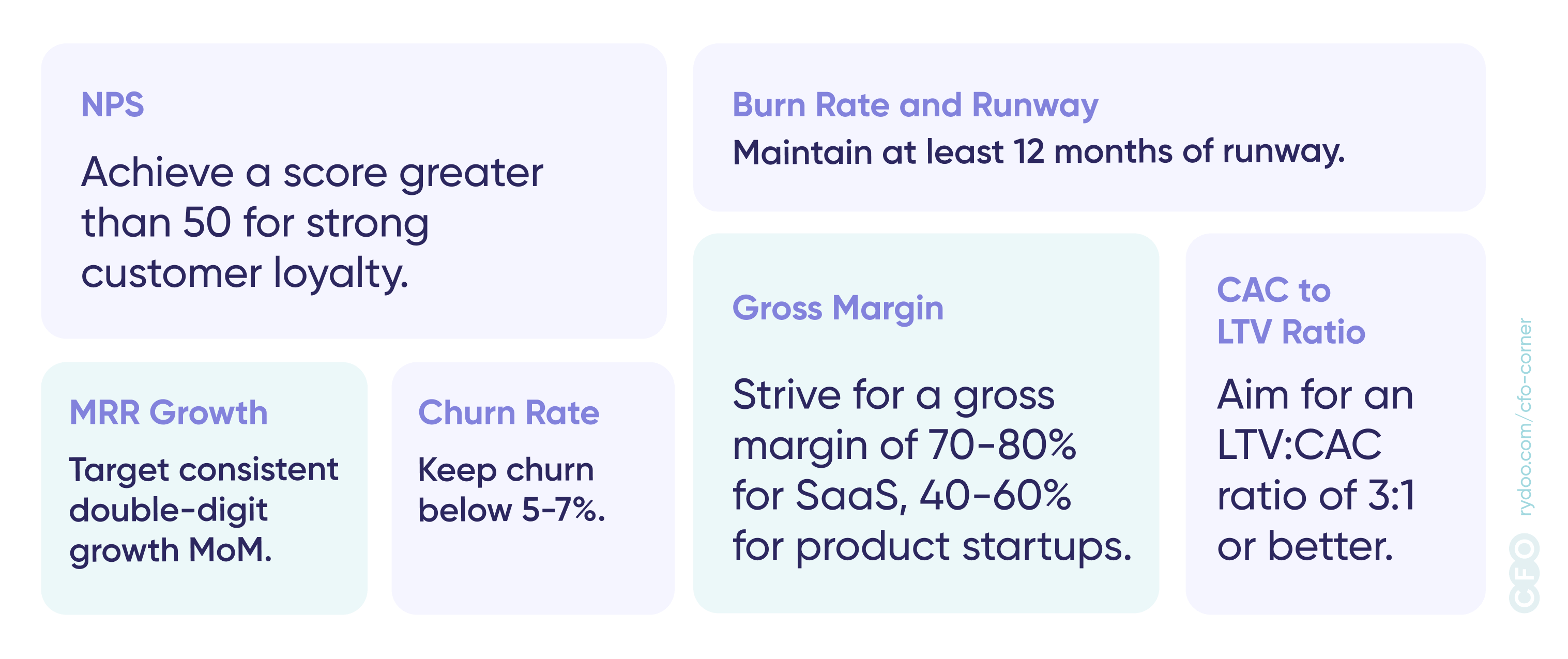Through my work with startups and scale-ups at different stages, I’ve gained unique insights into why so many struggle or fail. My journey has included founding my own agency, joining Unbabel early on, and spending four years there through Series C. I’ve also worked with several Series A startups and now with Rydoo, a private equity-backed scale-up undergoing fast expansion. I have experienced first-hand the most common pitfalls and best practices for building a successful startup.
The startup world is often romanticised as a hub of innovation and limitless opportunities. Yet, data tells a more sobering story. According to Startup Genome, about 90% of startups eventually fail, with many not making it past their first few years. Only 1.5% of startups achieve a successful exit of $50 million or more in the top eight U.S. ecosystems.
Many startups are built on great ideas that don’t always translate into customer demand.
Why, then, do entrepreneurs continue to create startups despite these seemingly impossible odds? The answer lies in the powerful combination of ambition, innovation, and potential rewards. Founders are driven to solve critical problems, make a meaningful impact, and gain financial freedom. They often understand the risks but are guided by an optimism bias — the belief that their startup will beat the odds.
Finance leaders can avoid common mistakes and guide their companies toward sustainable success by understanding the key reasons behind failures.
Financial mismanagement
According to CB Insights, the top reason for startup failure is running out of cash. Poor cash flow management, inadequate budgeting, and resource misallocation can quickly put a startup out of business.
A prime example is Pets.com, which collapsed despite heavy marketing, including a Super Bowl ad, due to poor cash flow and an unsustainable business model. The company failed to prioritise growth opportunities and establish proper financial controls, resulting in bankruptcy within two years.
The startup world is often romanticised as a hub of innovation and limitless opportunities.
Clear cash flow projections, careful tracking of cash inflows and outflows, and maintaining a cash reserve for unexpected expenses are essential for growth. Companies must avoid overly optimistic projections and use realistic financial models to prepare for both best- and worst-case scenarios. For example, Theranos, the infamous health tech startup, collapsed due to unrealistic financial projections and poor oversight, misleading investors for years before its downfall.
Leaders need to collaborate with other departments to validate the assumptions in financial models. This ensures that projections are realistic, reflect achievable goals, and minimise the risk of unexpected shortfalls.
It’s also critical to know when and how to seek funding. Timing and the amount of funds raised can determine a company’s future, as shown by WeWork. In 2019, WeWork faced liquidity issues due to unsustainable growth and high burn rates, leading to a failed IPO and massive devaluation.
Investors need confidence that their funds will be used efficiently and aligned with the company’s long-term strategic goals to ensure financial stability. Founders should raise enough capital to meet key milestones, making future funding rounds favourable. Diversifying funding sources—through venture capital, strategic partners, and grants — also helps reduce dependency on a single source.
Insufficient market need
Many startups are built on great ideas that don’t always translate into customer demand. According to CB Insights, 35% of startups fail because they lack market need for their product or service. Without a problem to solve or a market to serve, even the most innovative solutions can become irrelevant.
Juicero, for example, offered a high-tech juice press and subscription juice packs. However, consumers quickly realised they could squeeze the packs by hand, making the expensive machine unnecessary. The company lacked sufficient market research, resulting in failure.
Companies need to assess customer needs, analyse competitors, and identify potential market barriers. Tools like surveys, focus groups, and industry reports help understand the market.
Founders are driven to solve critical problems, make a meaningful impact, and gain financial freedom.
It’s also essential to ensure the product’s value proposition addresses real consumer pain points, which requires thorough testing and validation. Techniques like customer interviews, MVP testing, and feedback loops are key for validating assumptions. Early adopters can confirm if the solution resonates with the target audience.
This research boosts investor confidence and helps define the market size and position the startup against competitors. Quibi, for instance, failed to recognise the lack of demand for its short-form video content, especially considering the offer of YouTube and TikTok. It shut down within six months despite heavy investment.
Startups must be flexible and ready to pivot based on market feedback. This flexibility can mean the difference between success and failure. Slack and Twitter, for example, pivoted when their original ideas didn’t align with market realities, turning setbacks into opportunities. Finance leaders are key in ensuring the company has the resources to pivot and adjust financial plans to support the shift.
Ineffective leadership and team dynamics
A startup’s success often depends on its teams’ collective talent and drive, but poor leadership or weak team dynamics can derail even the most promising ventures. McKinsey research shows that ineffective leadership and management practices contribute to nearly 25% of startup failures.
Companies like Better Place, Jawbone, and Zirtual illustrate the impact of poor leadership. Better Place’s ambitious electric vehicle project failed due to strategic missteps. Jawbone, a leading consumer tech company, suffered from internal conflicts and product delays under weak leadership. Zirtual, a virtual assistant startup, shut down abruptly due to poor communication and financial mismanagement.
Flexibility can mean the difference between success and failure.
To avoid these issues, startups must prioritise strong leadership. Effective leaders have the skills and experience to handle crises and adapt to change. Regular evaluations and coaching can help identify and address skill gaps before they impact the company.
Building cohesive teams is also essential. A culture of collaboration and shared vision ensures everyone is aligned with company goals. Startups should invest in team-building and promote open communication to create a supportive environment.
Finally, startups must encourage continuous learning and adaptation. A culture of improvement helps address skill gaps and boosts team performance. Startups should offer ongoing training and incentivise professional growth. Leaders must also stay adaptable, open to feedback, and willing to shift strategies. This mindset fosters a culture where learning from failures is valued, helping the company grow through setbacks.
KPIs to measure startup success
To avoid falling into the common traps that lead to startup failure, leadership teams need to track specific Key Performance Indicators (KPIs) that serve as early warning signals.
These KPIs help determine whether a startup is on the right track or headed for trouble. By closely monitoring these metrics, leaders can make data-driven decisions to pivot, refine strategies, or course-correct before it’s too late.
Financial health
Burn Rate
A high burn rate without sufficient growth can lead to cash flow issues, a common reason for failure.
Ideally, startups should keep their burn rate low enough to extend the company’s financial runway while achieving key milestones.
Runway
The financial runway is how long the startup can operate before it runs out of money. A healthy runway is generally between 12 and 18 months, providing enough time to reach profitability or secure additional funding.
If the runway drops below six months without a clear funding or revenue path, it’s a red flag.
Gross Margin
Measures the percentage of revenue after the cost of goods sold (COGS). Startups should track their gross margin to understand their profitability potential.
A low gross margin suggests the company may struggle to cover operational expenses, let alone scale effectively.
Typically, SaaS startups aim for a gross margin of 70-80%, while product-based startups target around 40-60%.
Customer Acquisition and Retention:
CAC & LTV
CAC is the total cost of acquiring a new customer. A CAC higher than the revenue generated per customer is unsustainable. LTV represents the total revenue expected from customers over their relationship with the company.
Startups should aim for a ratio of LTV to CAC of ideally 3:1 or higher. If CAC is approaching or exceeding LTV, it suggests that marketing and sales strategies need to be revisited to improve efficiency.
Payback period
It measures the time it takes for a startup to recover the money spent on acquiring customers (CAC). This is a critical KPI for startups with limited resources, as it shows how quickly they can generate revenue to sustain operations.
The ideal CAC recovery time for startups is 12 months or less. High-performing SaaS companies typically recover their CAC in 5-7 months.
Churn Rate
High churn can be a sign of poor product-market fit or a lack of customer satisfaction.
Startups should maintain a low churn rate of 5-7% for sustainable growth. Monitoring churn helps ensure that startups deliver ongoing value to their customers.

Revenue Growth
MRR
It’s a critical metric for subscription-based startups, providing insight into revenue consistency and growth.
Healthy growth in MRR indicates that the startup’s value proposition is resonating with the market.
NRR
NRR measures the percentage of revenue retained from existing customers over a specific period.
For SaaS startups, a healthy NRR is typically above 100%, indicating that more revenue is generated from existing customers than lost.
Growth Rate
Startups need to monitor their month-over-month (MoM) and year-over-year (YoY) growth rates.
Consistent, double-digit MoM growth is often a sign of strong market demand, while stagnation may indicate issues with product-market fit or scaling efforts.
Customer Satisfaction
NPS
Measures customer satisfaction and loyalty and provides insight into how likely customers are to recommend the startup’s product or service.
A positive NPS (>50) indicates that customers are highly satisfied, while a negative or low score suggests deeper issues that need to be addressed.
By monitoring these KPIs, startup leaders can proactively identify and address potential risks before they threaten the startup’s viability.
Metrics provide a clear picture of financial health and help ensure that strategic decisions are based on data-driven insights rather than assumptions.
Understanding why 90% of startups fail equips leaders with the knowledge to build resilience and drive growth. Startups can improve their chances of survival and success through validated market needs, strong financial management, and effective leadership.



